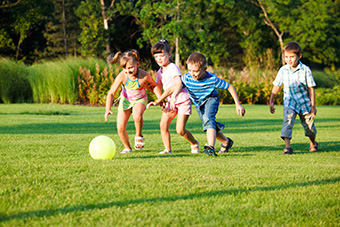1
Myopia is referred as nearsightedness. If you have myopia, you generally will have difficulty reading road signs and seeing distant objects clearly, but will be able to see well for close-up tasks such as reading. Read more
2
High myopia is also named as pathological myopia, usually defined as the spherical equivalent of greater than 5.00 diopters. Pathological myopia is generally progressive and presents very early in childhood.
3
Myopia occurs when the eyeball becomes too long, therefore, incoming light rays focus at a point in front of the retina rather than directly on the retina surface, which causes distance objects to appear blurry.
4
Children whose parents have pathological myopia are more likely to develop myopia. Myopia is often diagnosed in children between 5 and 12 years of age and may continuously become worse during the teen years.
5
When children notice their distance vision decreases, some children may tell their parents; but many won’t. Your child may have myopia if he or she squints or frowns when watching TV, gets headaches often after reading, or likes to watch TV at a very close distance. The child may not be interested in sports or other activities that require good distance vision. These indicate that it is time to take your child to see an optometrist.
6
Pathological myopia is predominantly caused by genetic factors. Children inherit the tendency to develop the eye condition from their high myopic parents. Additionally, how the children use their eyes, for instance, constantly performing close-up tasks, may also have an influence on the development of myopia.
7

Although it is not completely preventable, there are steps you can take to minimize myopia occurring.
Scientists suggest that a minimum 2 hours of outdoor activities can help to hinder the onset of myopia.
8
It is quite the opposite as a matter of fact. The myopic eyes are in need of relaxation instead of “exercise”. When eyes are looking at the distance objects, they are at rest.
9
Generally, myopia progresses year after year throughout the adolescent growth period. As myopia gets worse, the vision gets worse. Their vision usually stabilizes as they become adults.
10
In people with myopia, especially with high myopia, the eyeball stretches and becomes too long. Unfortunately, elongation of the eyeball is not reversable. This can lead to holes or tears in the retina and even result in retinal detachment. Abnormal blood vessels may also grow under the retina and cause vision to deteriorate. High myopia also increases the risk of developing other vision threatening pathological conditions such as cataracts, glaucoma and macular degeneration etc.
11
We adopt two mainstream strategies for myopia control in children: atropine eye drops and orthokeratology, also called Ortho-K, or OK lenses.
12
There is no age limitation on when the pharmaceutical treatment can start. From our experience, the earlier the treatment starts, the more effective it is. Young child can start Ortho-K as early as 7 years old. Early treatment using Ortho-K can sometimes be hindered by the non-compliance of the child due to his or her maturity. Emotional readiness of the child generally improves the success of the treatment. Support and encouragement from the parents will make the Ortho-k experience of a child an enjoyable one.
Copyright © Myopia Control Centre | Ortho-K Melbourne. All rights reserved